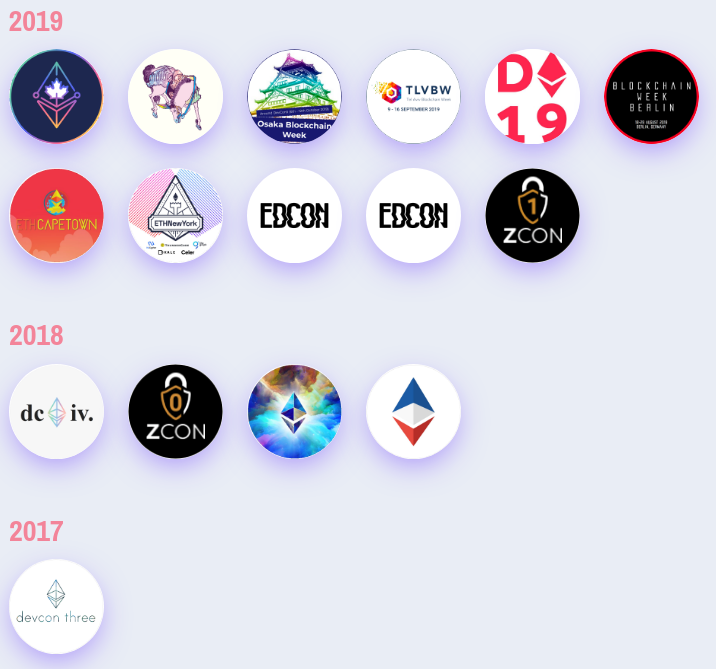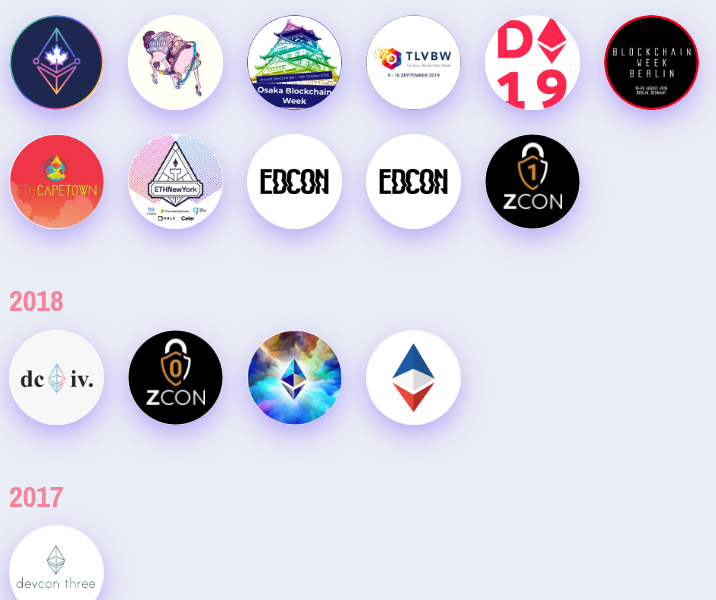WTF Are POAPs? The Intriguing Power of Proof of Attendance Protocol
In the last few years, the Proof of Attendance Protocol, commonly referred to by the acronym POAP (pronounced “poh-ap” or “poe-app”), has grown in leaps and bounds alongside the NFT space. Once perceived as a simple platform used to issue commemorative NFTs to Web3 communities, in 2022 alone the protocol leveled up, completing a $10-million funding round and incorporating.
Yet, while POAP has proliferated to the farthest reaches of the non-fungible ecosystem, the general NFT enthusiast remains unaware of the true power of the unique platform. While many are happy enough to click a link, collect a commemorative badge and move on, few have dove deep into understanding the possible significance of POAP as it pertains to blockchain tech and Web3 culture.
As POAP has grown in popularity, the company’s Head of Communications, David Chung, and Head of Growth, Anthony Bertolino continue to vouch for the viability of their platform in the changing NFT market. We sat down with the pair to get some insight on the tech and team behind the evolving protocol and to find out why Chung and co believe POAP to be “the perfect merger of the human condition and Web3.”
What is POAP?
Put simply, POAP is a protocol that enables users to create digital badges or collectibles through the use of blockchain technology. The origins of the company date back to 2019, when it was introduced at ETHDenver. Similar to other marketplaces/platforms in the NFT ecosystem, POAP allows users to, well, create NFTs. But a very specific and unique type of commemorative badge-style NFTs. And these NFTs are commonly called POAPs.

Yes, that’s right, the platform itself is called POAP and the badge-style NFTs created on the platform are also referred to as POAPs. It’s important to note that while other commemorative NFT platforms similar to POAP do exist, the Proof of Attendance Protocol was the first of its kind, leading to nearly every NFT of a similar nature being called a POAP. Think of it as a sort of genericization, like how facial tissues are often referred to as Kleenex®.
The major function of the POAP platform is to enable events coordinators, project developers, and even the average joe to create commemorative tokens to immortalize events, activations, and memories on the blockchain. (More on the process of creating POAPs later.)
“Throughout human history, humans have always collected things. Whether that be, in most recent times, baseball cards, movie tickets, or concert tickets. Or if we go way way back it’d be something like passing down shells between tribesmen,” said Bertolino. “POAP is one of the first protocols for digital collectibles. It’s built on blockchain technology, so collectibles can be permanently stored without you needing to maintain them.”
What are POAPs mainly used for?
As the NFT space grew throughout 2021, POAPs quickly became an avenue through which organizers could reward event attendees, Twitter Space participants, NFT drop participants, Discord members, and more. Over time, POAPs started to gain utility as status symbols, incentivizing holders to collect them on OpenSea to potentially receive perks down the line.
To date, several artists and developers have used POAPs to whitelist holders for subsequent drops, with Gmoney’s Admit One collection becoming one of the most prominent to do so. As POAPs gain more utility, they’re even becoming a backward-compatible prerequisite for attendees of earlier events to acquire NFT tickets for future ones.
But Bertolino notes that while portability, transferable provenance, and immutable digital ownership are of course prominent features of POAP — as they are with NFTs in general — the protocol exists in a way that allows not only those privy to blockchain tech, but also everyday people the ability to become issuers. This is where the POAP really shines through as a steward of mainstream NFT adoption.
In speaking on the use cases of the POAP platform, Bertolino highlights that POAPs can be created for any type of physical or digital event. “Anything from like a big corporate where you’d want to give out a digital collectible at your booth, to a personal event, like commemorating a wedding or a birthday, or a community event, like a Twitter Space,” Bertolino said.
“You can use [POAP] in any way you want. You can use it for token-gating, you can use it as a loyalty badge for the same 10 attendees who come to your event every year, or it could be used to build a small personal community. It’s very accessible. I guess that’s the word we should use. It’s, accessible to everybody,” Chung added.
Commemorative NFTs are cool, but are they useful?
Undoubtedly, POAP is defined by its commemorative and accessible nature. And while these two features may seem trivial, they speak to the core values that help drive innovation within the NFT ecosystem.
Notably, an understated utility of POAPs emerged recently, in 2022, with the introduction of Soulbound tokens (SBTs). While SBTs, proposed via a paper penned in part by Ethereum Co-Founder Vitalik Buterin, have become a shining example of the latent powers of NFT and blockchain tech, Bertolino believes POAP to be the original testament to the idea of identity and reputation tokens.
“The truth of the matter is, in a spiritual sense, POAP is actually the original Soulbound token. Just because we haven’t set up the contracts to lock tokens to your address doesn’t mean that POAPs are not Soulbound tokens,” Bertolino said. “[POAPs] are your memories, and they’re very much tied to your soul. Whether they’re tied to your wallet address or not is a totally different thing.”
Bertolino notes that while POAPs don’t embody the specific functionality of Soulbound tokens, as it pertains to how SBTs might operate in a Decentralized Society, they do adhere to the narrative of being real-life achievements and accolades linking to organizations and events. Seemingly the most major difference between POAPs and SBTs is the immutable aspect, since POAPs can be made by, and traded to anyone, while SBTs are said to be non-transferable and secured to an individual’s “Soul Wallet”.
Another difference between how we perceive SBTs and POAPs is the accessibility factor. SBTs will be inherently inaccessible because they require a robust sense of security to be viable. With POAP, security is of course an important factor, but only as important as it is to any NFT collection or general enthusiast.
According to Bertolino, POAPs exist separate from speculation in the NFT space. “Say you make a POAP for your birthday. There will be no secondary volume in the market for that. No one wants to buy it,” he said. “So POAP is one of the few use cases that we could see scaling into mainstream adoption that has nothing to do with speculation and also proves that blockchain technology is valuable.”
Without the aspect of piling ETH, submitting transactions, paying gas fees, and all the other things that come with being an NFT collector, the bar of entry to the POAP ecosystem is low. And because of how easy POAP is to use, really anyone can get involved, without needing any knowledge of or context for NFTs. “We are constantly iterating on the protocol and the experience to make it more simple, more fun, and more friendly,” said Bertolino.
How to get started with POAP
The POAP platform is constantly expanding, which means new opportunities for builders are more likely than not down the line. In fact, both Chung and Bertolino were substantially confident about the future of the POAP platform, although they weren’t at liberty to divulge exactly why.
For now though, if you’re hoping to get involved in the POAP ecosystem, you’ll want to do so as either an issuer or a collector.
How to create a POAP
Creating a POAP drop happens on the POAP Events page. Simply click the “Create new POAP” icon. Fill in the information on the “Create new POAP” page. This will include uploading the image you want to turn into a badge. It can be a PNG or APNG, but it can’t exceed 200KB. For best results, use a round image with dimensions of 500 x 500 pixels.
After filling in all the required details and navigating through prompts, check your email for your POAP edit and claim codes. Your edit code is necessary if you have to make any changes to your event info or badges.
Although you’ll already have codes, you’ll need to wait for pre-event approval to go live on the POAP platform. This process typically takes roughly 24 hours. Once approved, send out your claim codes to all who you intended recipients of POAPs. If you need more codes, you can get them through the event editing page.
How to collect a POAP
To claim a POAP, you’ll first need to download the POAP application, available via the Apple App Store and Google Play Store.
Once you’ve downloaded the app, navigate to the bottom right of the page and tap on the “Mint ” button to view the available minting options. POAPs can be claimed in one of three ways: by entering a secret word, by scanning a QR code, or by entering the last six characters of a mint link. Once you select one of these three methods and click mint, the POAP is now yours to share throughout the metaverse. But keep in mind that POAPs don’t mint on the Ethereum Mainnet, so to move it to your regular NFT wallet, you’ll have to migrate it over to the Mainnet by following a simple process and submitting a transaction.
As the POAP platform evolves, these processes may or may not change. Yet one thing seems likely to remain the same: the Proof of Attendance Protocol and its growing community will continue to stay, as Bertolino puts it, “fun, smart, and connected.”
The post WTF Are POAPs? The Intriguing Power of Proof of Attendance Protocol appeared first on nft now.

